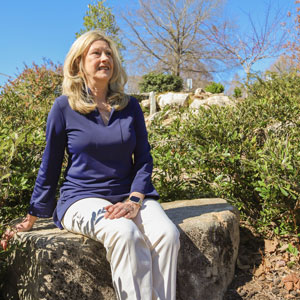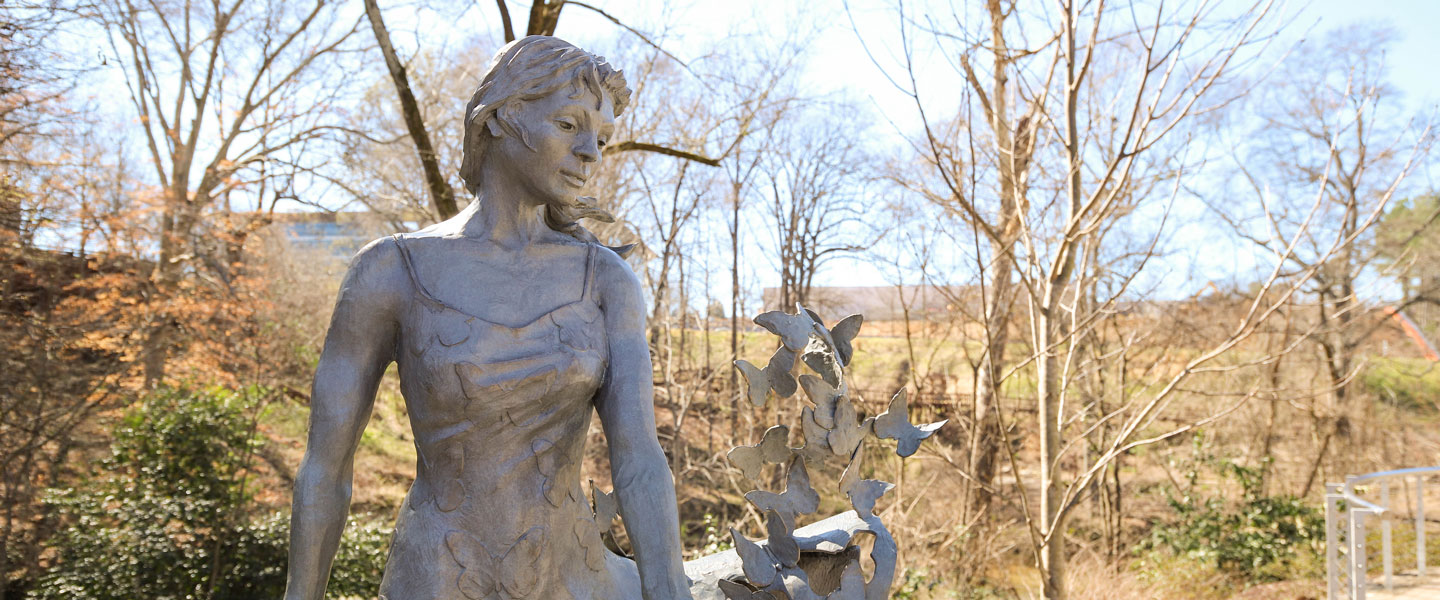Driven to Comfort: Diane Gluck
May 11th, 2022
This is an excerpt from the Spring/Summer 2022 issue of the Upstate Advocate, Upstate Forever's twice-yearly publication. To read a digital copy of the complete publication, please click here.
 Diane Gluck
Diane Gluck

FOUNDER, CANCER SURVIVORS PARK ALLIANCE | GREENVILLE
The impetus for creating a Cancer Survivors Park in Greenville came from my daughter, Kimberly. She researched and designed the original park as part of her Senior Project at Christ Church Episcopal School in 1999. Her initial plan was to create a small healing garden outside of the windows of the cancer treatment room on the Eastside campus of Cancer Centers of the Carolinas so that patients would have something beautiful to look at while undergoing treatment.
However, when her research led her to the Bloch Foundation Cancer Survivors Parks, which focused on changing beliefs about cancer and focusing on living with rather than dying from cancer, she expanded her vision. She brought together the original steering committee and created the original design and infrastructure for the project. I became the firesoul — the “push” to keep the project moving forward regardless of the obstacles. Together with several critical members of that original committee, in particular the landscape architect Tom Keith, we worked to shepherd the idea forward until it finally came to fruition almost 20 years later.
Cancer Survivors Park in Greenville was specifically designed to capitalize on several key elements thought to improve healing: the power of nature to provide respite and rejuvenation, the power of community to decrease loneliness and isolation, the power of knowledge to introduce holistic programs that complement the benefits of medical treatment, and the power of the mind to encourage everyone to see cancer or any life-threatening illness as a turning point rather than an endpoint.
I have been fortunate to be able to spend a lot of time in the park and watch as people experience its many unique spaces and find their own space to heal. I have been astounded by the numerous serendipitous occurrences — the heron swooping down low over the speaker during the opening ceremonies for the park, the turtles returning to their nest near the labyrinth right when we are walking by, or the hawk sitting atop the stone column beside the bridge for almost half an hour, totally undisturbed by the onlookers snapping photos.
The most special to me, however, have been those moments when I felt that Cancer Survivors Park had become more than just another park. The first occurred during a drumming class for cancer survivors. We were inside the Center for Hope and Healing with the sun streaming through the windows and a focused view of the trees. People were walking and biking along the Prisma Health Swamp Rabbit Trail and glancing in to watch. At the end of the session, one of the cancer survivors commented, “I love having our classes here. I love being surrounded by nature but, even more, I love that people can look in and see us and think ‘Wow, they look normal.’”
The second experience was when I met a young father and his daughter at the park. The little girl’s mother had just passed away earlier that day, and she had asked to come to the park. The father told me that during the mother’s illness, the family had come to the park often, hoping that the girl would have a happy place that she could come to and feel her mother’s presence. That day, the little girl joyfully shared that she was happy because she was at “mommy’s park.”

Cancer impacts us all in some way and rocks our world — physically, emotionally, and socially. Despite the advances being made in treatment and survivorship, the diagnosis continues to be associated with fear and hopelessness. I have spent most of my adult life with cancer survivors, both professionally as a family therapist and personally as the wife of an oncologist and the daughter and daughter in- law of cancer survivors. I consistently observed the role that attitudes and beliefs play in how different people deal with illness and trauma. Many survive their illness but never completely heal.
As we developed the concept for Greenville’s Cancer Survivors Park, we spent a lot of time learning about the power of place and, in particular, the advantages nature can have on the healing process. Research has clearly shown that time spent with nature can decrease stress, improve mood, and change one’s physiology in ways that enhance healing. In addition, being “in community” and interacting with others in peaceful settings is known to provide significant health benefits.
Finally, groups like NatureSacred have consistently demonstrated that when open natural settings are intentionally combined with personal stories and inspiring messaging about healing, they become sacred places that not only delight, but also transform visitors. That is what we hope we have created for anyone seeking to find peace and healing, regardless of where they are on their life’s journey.
Learn more about the park at cancersurvivorspark.org.

